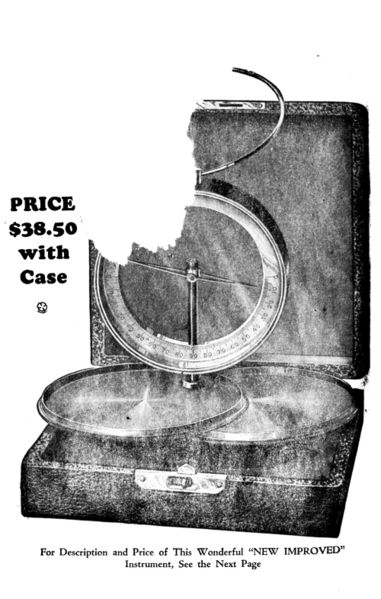 For a description of this wonderful, “NEW IMPROVED” instrument,
For a description of this wonderful, “NEW IMPROVED” instrument,
see the next page — although it will tell you what’s so great about this particular dip needle, it doesn’t really say how to use it (although, if you buy it, they will send instructions with). Dip needles are essentially a compass, but mounted sideways; instead of a magnetic source being measured in the north-south-east-west vein, a dip needle indicates just how close to the horizon a magnetic field line is. Standing on top of one, it points down, but most everything else will be some degree of angle from the horizontal. This particular dip needle has an additional axis, a “z” axis to the compass’ x and the dip needle’s y. Model also offered a z-less version of the dip needle, for the price-conscious prospector.
Given the external amount of magnetic influence on our planet just by having a north pole, a dip needle may seem like a fancy form of dowsing, but they do have a history of genuine use. Today, we use magnetically tuned electronics to find buried metals, but in 1930 these archaic mechanical devices were the state-of-the-art technology for prospectors. Dip needles have shown to be successful in prospecting for magnetic and conductive metals, but for obvious reasons not particularly effective for finding gems, oil, or coal. In theory, a small dip needle like above (about 3-½ inches across) is not likely to be sensitive enough to find nuggets or coins, but people claim to have success in finding largish metallic deposits with them.
At first glance, the interest in prospecting in 1930 seemed to me to be Depression-related, but by the 1920s prospecting as an individual sport was declining, having far more popularity fifty years earlier. The gold rushes of the 19th century were fading, but still recent enough to encourage people to believe that another mother lode was just waiting to be found.